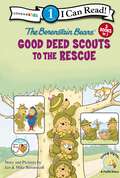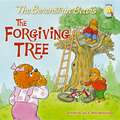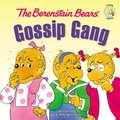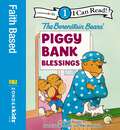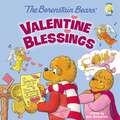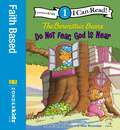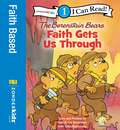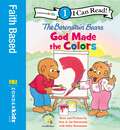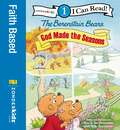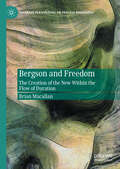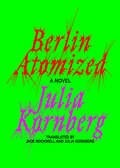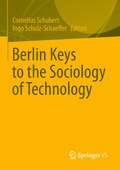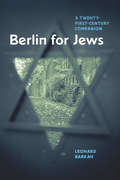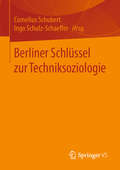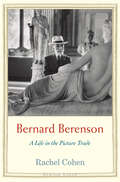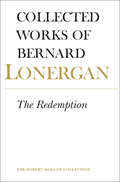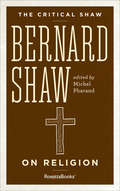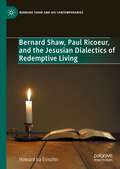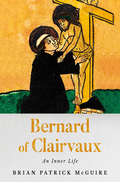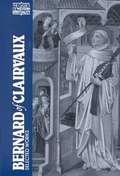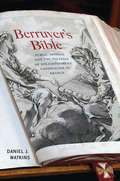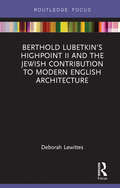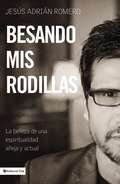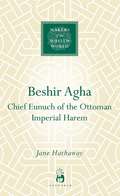- Table View
- List View
Berenstain Bears Good Deed Scouts to the Rescue: Level 1 (Berenstain Bears/Living Lights: A Faith Story)
by Jan Berenstain Mike BerenstainYoung readers will learn just how important it is to serve your community and one another in The Berenstain Bears Good Deed Scouts to the Rescue. Written in Level One I Can Read™ standards, this three-book collection of titles from the Berenstain Bears Living Lights I Can Read series is sure to please young, emergent readers practicing early reading skills.The Berenstain Bears Good Deed Scouts to the Rescue is perfect for:Increasing early reading skills with simple vocabulary and age-appropriate themesReading out loud at home, in the classroom, or at story timeFans of the Berenstain BearsServing as a springboard for discussion on service to the communityThe Berenstain Bears Good Deed Scouts to the Rescue is an addition to the Living Lights™ I Can Read series that:Features the hand-drawn artwork of the Berenstain familyContinues in the much-loved footsteps of Stan and Jan Berenstain in this Berenstain Bears series of booksIs part of one of the bestselling children&’s book series ever created, with more than 250 books published and nearly 300 million copies sold to dateIncluded in this collection are The Berenstain Bears Kitten Rescue, The Berenstain Bears Neighbor in Need, and The Berenstain Bears Little Lost Cub.
Berenstain Bears and the Forgiving Tree (Berenstain Bears/Living Lights: A Faith Story)
by Jan Berenstain Mike BerenstainTeaching children about forgiveness and compassion can be challenging. In this addition to the Living Lights™ series of Berenstain Bears books, young readers will identify what behaviors are frustrating or hurtful. Children will learn the importance of controlling their emotions and the process of forgiveness. The Berenstain Bears and the Forgiving Tree—part of the popular Zonderkidz Living Lights™ series of books—is perfect for:Early readers, ages 4-8Reading out loud at home or in a classroomBeginning ongoing conversations about forgiveness and how to be a good personThe Berenstain Bears and the Forgiving Tree:Features the hand-drawn artwork of the Berenstain familyContinues in the much-loved footsteps of Stan and Jan Berenstain with the Berenstain Bears series of booksIs part of one of the bestselling children&’s book series ever created, with more than 250 books published and nearly 300 million copies sold to date
Berenstain Bears' Gossip Gang (Berenstain Bears/Living Lights: A Faith Story)
by Jan Berenstain Mike BerenstainYoung readers will be interested to read about Sister&’s experience with gossip and how it can be hurtful in this addition to the Living Lights™ series of Berenstain Bears books. Children will learn about the importance of kindness, character, and how gossip can be hurtful.The Berenstain Bears&’ Gossip Gang—part of the popular Zonderkidz Living Lights series of books—is perfect for:Early readers ages 4-8Reading out loud in classrooms, during story time, and at home or bedtimeBirthday gifts, Easter, holiday gift giving, or as a new addition to your e-librarySparking meaningful conversations about kindness and the importance of not participating in gossipThe Berenstain Bears&’ Gossip Gang is an addition to the Living Lights™ series that:Features the hand-drawn artwork of the Berenstain familyContinues in the much-loved footsteps of Stan and Jan Berenstain in this Berenstain Bears series of booksIs part of one of the bestselling children&’s book series ever created, with more than 250 books published and nearly 300 million copies sold to date
Berenstain Bears' Piggy Bank Blessings: Level 1 (I Can Read! / Berenstain Bears / Living Lights: A Faith Story)
by Stan Berenstain Jan Berenstain Mike BerenstainYoung readers will begin sounding out words and reading simple sentences in this Level One I Can Read addition to the Living Lights™ series of Berenstain Bears books. Children will learn the importance of saving money.The Berenstain Bears' Piggy Bank Blessings—part of the popular Zonderkidz Living Lights series of books—is perfect for:Early readers ages 4-8Teaching new readers how to sound out words and use context cluesSparking meaningful conversations about the importance of saving money and understanding we can&’t have everything that we wantThe Berenstain Bears' Piggy Bank Blessings is an addition to the Living Lights™ series that:Features the hand-drawn artwork of the Berenstain familyContinues in the much-loved footsteps of Stan and Jan Berenstain in this Berenstain Bears series of booksIs part of one of the bestselling children&’s book series ever created, with more than 250 books published and nearly 300 million copies sold to date
Berenstain Bears' Valentine Blessings: A Valentine's Day Book For Kids (Berenstain Bears/Living Lights: A Faith Story)
by Mike BerenstainA new Berenstain Bears Living Lights book perfect for Valentine&’s Day! In The Berenstain Bears&’ Valentine Blessings, young readers and Sister Bear find out that Brother Bear has a secret admirer! Sweetie Bear has sent him a valentine card, complete with pink hearts and flowers. What will tough, hockey-playing Brother do about this and his teasing sister? But Papa Bear steps in to save the day, telling the cubs a story about another set of young cubs and a secret admirer … Papa and Mama Bear! And he reminds the cubs that all love comes from God, who is love.The Berenstain Bears&’ Valentine Blessings:The bestselling and beloved Berenstain Bears brandLiving Lights seriesProven tradition of teaching children valuable life lessons in a fun and creative wayIncludes a sheet of colorful stickers featuring the whole Bear family
Berenstain Bears, Do Not Fear, God Is Near: Level 1 (I Can Read! / Berenstain Bears / Living Lights: A Faith Story)
by Stan Berenstain Jan Berenstain Mike BerenstainYoung readers will begin sounding out words and reading simple sentences in this Level One I Can Read addition to the Living Lights™ series of Berenstain Bears books. Children will learn why it is important to stop being afraid and trust in God. The Berenstain Bears, Do Not Fear, God Is Near—part of the popular Zonderkidz Living Lights series of books—is perfect for:Early readers ages 4-8Teaching new readers how to sound out words and use context cluesSparking intentional conversations about God being in control and the importance of trusting himBirthday gifts, Easter, holiday gift giving, or as a new addition to your e-library The Berenstain Bears, Do Not Fear, God Is Near is an addition to the Living Lights™ series that:Features the hand-drawn artwork of the Berenstain familyContinues in the much-loved footsteps of Stan and Jan Berenstain in this Berenstain Bears series of booksIs part of one of the bestselling children&’s book series ever created, with more than 250 books published and nearly 300 million copies sold to date
Berenstain Bears, Faith Gets Us Through: Level 1 (I Can Read! / Berenstain Bears / Living Lights: A Faith Story)
by Stan Berenstain Jan Berenstain Mike BerenstainYoung readers will begin sounding out words and reading simple sentences in this Level One I Can Read addition to the Living Lights™ series of Berenstain Bears books. Children will learn about the core value of faith as they read about Papa and the Good Deed Scouts&’ cave-exploring adventure.The Berenstain Bears, Faith Gets Us Through—part of the popular Zonderkidz Living Lights series of books—is perfect for:Early readers ages 4-8Teaching new readers how to sound out words and use context cluesSparking intentional conversations about trust, commitment, and the importance of biblical valuesThe Berenstain Bears, Faith Gets Us Through is an addition to the Living Lights™ series that:Features the hand-drawn artwork of the Berenstain familyContinues in the much-loved footsteps of Stan and Jan Berenstain in this Berenstain Bears series of booksIs part of one of the bestselling children&’s book series ever created, with more than 250 books published and nearly 300 million copies sold to date
Berenstain Bears, God Made the Colors: Level 1 (I Can Read! / Berenstain Bears / Living Lights: A Faith Story)
by Stan Berenstain Jan Berenstain Mike BerenstainYoung readers will begin sounding out words and reading simple sentences in this Level One I Can Read addition to the Living Lights™ series of Berenstain Bears books. Children will learn about all of the colors that exist in the world because of God.The Berenstain Bears, God Made the Colors—part of the popular Zonderkidz Living Lights series of books—is perfect for:Early readers ages 4-8Teaching new readers how to sound out words and use context cluesSparking educational conversations about the large array of colors God createdThe Berenstain Bears, God Made the Colors is an addition to the Living Lights™ series that:Features the hand-drawn artwork of the Berenstain familyContinues in the much-loved footsteps of Stan and Jan Berenstain in this Berenstain Bears series of booksIs part of one of the bestselling children&’s book series ever created, with more than 250 books published and nearly 300 million copies sold to date
Berenstain Bears, God Made the Seasons: Level 1 (I Can Read! / Berenstain Bears / Living Lights: A Faith Story)
by Stan Berenstain Jan Berenstain Mike BerenstainYoung readers will begin sounding out words and reading simple sentences in this Level One I Can Read addition to the Living Lights™ series of Berenstain Bears books. Children will learn about the four seasons – winter, spring, summer, and fall.The Berenstain Bears, God Made the Seasons—part of the popular Zonderkidz Living Lights series of books—is perfect for:Early readers ages 4-8Teaching new readers how to sound out words and use context cluesSparking educational conversations about the four seasons and the fun you can have each seasonThe Berenstain Bears, God Made the Seasons is an addition to the Living Lights™ series that:Features the hand-drawn artwork of the Berenstain familyContinues in the much-loved footsteps of Stan and Jan Berenstain in this Berenstain Bears series of booksIs part of one of the bestselling children&’s book series ever created, with more than 250 books published and nearly 300 million copies sold to date
Bergson and Freedom: The Creation of the New Within the Flow of Duration (Palgrave Perspectives on Process Philosophy)
by Brian MacallanThis book provides the first full length treatment of the nature and function of freedom within the work of Henri Bergson. It does so while also introducing Bergson’s key ideas and major works. It explores Bergson through the lens of freedom, while at the same time showing how Bergson’s work might engage with current challenges. It does this by examining the four major works of Bergson, highlighting how freedom can be conceived in each text and how Bergson addresses key freedom problematics in those works. It offers a definition of freedom in Bergson as the “creation of the new within the flow of duration.” What emerges, is that freedom remains crucial for Bergson beyond the obvious treatment of freedom directly in Time and Free Will. Free will, memory, evolution, religion, and morality are major themes for Bergson. Moreover, there are particular freedom problematics concerning each of those themes that illustrate the central importance of freedom in Bergson. These include determinism, dualism, materialism, mechanism, finalism, and the notion of the open and closed.
Berlin Atomized: A Novel
by Julia Kornberg"Berlin Atomized is the world bridged, coupled, and made fast—by the latest lost generation and by Julia Kornberg's border-and-genre-crossing talent, as restless as a flame." —Joshua Cohen, author of the Pulitzer Prize and National Jewish Book Award winning The NetanyahusA kinetic, globetrotting novel following three siblings—Jewish and downwardly mobile—from 2001 to 2034, as they come of age against the major crises of the 21st century.Berlin Atomized begins in Buenos Aires of the early 2000s with the self-baptisms of Nina Goldstein. She bathes too frequently, washing with fervor and repeating: &“I am not asleep.&” She grows up partying and taking undeserved siestas, while her eldest brother Jeremías is drawn into the city&’s powder keg music scene, and the middle sibling, Mateo, learns of his terminal illness and prepares to join the IDF. Though Argentina faces the worst economic crisis in its history, the Goldsteins are being reared in a newly developed gated community that displaces working class families. Each sibling rehearses their escape from the capitalist Eden of their birth, unaware that the gated community will soon be underwater, and their family scattered all over the earth.The second half of the novel takes place between 2018 and 2035, invoking and imagining possible futures for this existence in migration. Jeremías lives in Paris until an undeclared war destroys the city, and Nina, after tracing Mateo&’s last steps to his death in Tel Aviv, ends up in Berlin, where the European Union is found in the shambles of its own history. From Punta del Este to Paris, Berlin to Jerusalem, Brussels to Tokyo, the novel progresses into a dire near future of constant flight and fire as the siblings search for one another.Defiant and dexterous, percussive and percolating with violent light, Berlin Atomized is Julia Kornberg&’s napalm-ic debut—a tale about the end of the world, as told by the clear-eyed youth to which that world had been promised.
Berlin Keys to the Sociology of Technology
by Ingo Schulz-Schaeffer Cornelius SchubertThis volume offers a cross-section of a good fifteen years of research in the sociology of technology and innovation at the Department of Sociology of Technology headed by Werner Rammert at the TU Berlin. All contributions in this volume were initiated or discussed there and thus bear in a certain sense a "Berlin signature" - not in the sense of a clearly delimited scientific school, but rather in the form of an open discussion group with different, but mutually related focal points. The Berlin Key, which gives it its title, imposes on all its users the program of action objectified in its mechanism: "User, if you want to take the key back to yourself after unlocking the door and go your way, you must lock the door again first. Unlike that Berlin key, the "Berlin Keys to the Sociology of Technology" presented here offer a set of keys to different butinterconnected conceptual and methodological approaches in social science research on technology and innovation.
Berlin for Jews: A Twenty-First-Century Companion
by Leonard BarkanWhat is it like to travel to Berlin today, particularly as a Jew, and bring with you the baggage of history? And what happens when an American Jew, raised by a secular family, falls in love with Berlin not in spite of his being a Jew but because of it? The answer is Berlin for Jews. Part history and part travel companion, Leonard Barkan's personal love letter to the city shows how its long Jewish heritage, despite the atrocities of the Nazi era, has left an inspiring imprint on the vibrant metropolis of today. Barkan, voraciously curious and witty, offers a self-deprecating guide to the history of Jewish life in Berlin, revealing how, beginning in the early nineteenth century, Jews became prominent in the arts, the sciences, and the city's public life. With him, we tour the ivy-covered confines of the Schönhauser Allee cemetery, where many distinguished Jewish Berliners have been buried, and we stroll through Bayerisches Viertel, an elegant neighborhood created by a Jewish developer and that came to be called Berlin's "Jewish Switzerland." We travel back to the early nineteenth century to the salon of Rahel Varnhagen, a Jewish society doyenne, who frequently hosted famous artists, writers, politicians, and the occasional royal. Barkan also introduces us to James Simon, a turn-of-the-century philanthropist and art collector, and we explore the life of Walter Benjamin, who wrote a memoir of his childhood in Berlin as a member of the assimilated Jewish upper-middle class. Throughout, Barkan muses about his own Jewishness, while celebrating the rich Jewish culture on view in today's Berlin. A winning, idiosyncratic travel companion, Berlin for Jews offers a way to engage with German history, to acknowledge the unspeakable while extolling the indelible influence of Jewish culture.
Berliner Schlüssel zur Techniksoziologie
by Ingo Schulz-Schaeffer Cornelius SchubertDer Band bietet einen Querschnitt durch gut fünfzehn Jahre technik- und innovationssoziologischer Forschungen am von Werner Rammert geleiteten Fachgebiet für Techniksoziologie an der TU Berlin. Alle Beiträge dieses Bandes wurden dort angeregt oder diskutiert und tragen so in gewisser Weise eine „Berliner Handschrift“ – nicht im Sinne einer klar umgrenzten wissenschaftlichen Schule, sondern vielmehr in Gestalt eines offenen Diskussionszusammenhanges mit unterschiedlichen, aber wechselseitig aufeinander bezogenen Schwerpunktsetzungen. Der titelgebende Berliner Schlüssel zwingt allen seinen Benutzer*innen das in seinem Mechanismus objektivierte Handlungsprogramm auf: „Benutzer*in, wenn du, nachdem du die Tür aufgeschlossen hast, den Schlüssel wieder an dich nehmen und deiner Wege gehen willst, muss du die Tür zuvor wieder zuschließen.“ Anders als jener Berliner Schlüssel bieten die hier vorgelegten „Berliner Schlüssel zur Techniksoziologie“ einen Schlüsselbund unterschiedlicher, aber miteinander verbundener konzeptioneller und methodischer Herangehensweisen in der sozialwissenschaftlichen Technik- und Innovationsforschung.
Bernard Berenson
by Rachel CohenWhen Gilded Age millionaires wanted to buy Italian Renaissance paintings, the expert whose opinion they sought was Bernard Berenson, with his vast erudition, incredible eye, and uncanny skill at attributing paintings. They visited Berenson at his beautiful Villa I Tatti, in the hills outside Florence, and walked with him through the immense private library--which he would eventually bequeath to Harvard--without ever suspecting that he had grown up in a poor Lithuanian Jewish immigrant family that had struggled to survive in Boston on the wages of the father's work as a tin peddler. Berenson's extraordinary self-transformation, financed by the explosion of the Gilded Age art market and his secret partnership with the great art dealer Joseph Duveen, came with painful costs: he hid his origins and felt that he had betrayed his gifts as an interpreter of paintings. Nevertheless his way of seeing, presented in his books, codified in his attributions, and institutionalized in the many important American collections he helped to build, goes on shaping the American understanding of art today. This finely drawn portrait of Berenson, the first biography devoted to him in a quarter century, draws on new archival materials that bring out the significance of his secret business dealings and the way his family and companions--including his patron Isabella Stewart Gardner, his lover Belle da Costa Greene, and his dear friend Edith Wharton--helped to form his ideas and his legacy. Rachel Cohen explores Berenson's inner world and exceptional visual capacity while also illuminating the historical forces--new capital, the developing art market, persistent anti-Semitism, and the two world wars--that profoundly affected his life.
Bernard Lonergan: The Redemption, Volume 9 (Collected Works of Bernard Lonergan #9)
by Bernard Lonergan Robert Doran, S.J. H. Daniel Monsour Jeremy WilkinsThematically focused on the theology of redemption or what is called in theology "soteriology," each of the two sections of The Redemption addresses biblical literature and significant moments in the history of Christian theology, and especially the work of Anselm of Canterbury. The second part of the book presents a significant treatment of the problem of good and evil, and introduces the important category of cultural evil. Most significant from the standpoint of Lonergan's original contribution is the treatment accorded in both Part 1 and Part 2 to what he calls "the just and mysterious law of the cross." The treatment of biblical literature contains a valuable distinction between "redemption as end" and "redemption as medium." Beginning with theses 15-17 from Lonergan's Collected Works, The Incarnate Word, this volume also includes rare and never-before-published texts originally written in the late 1950s.
Bernard Shaw on Religion: On Religion (The Critical Shaw)
by George Bernard ShawFrom the Nobel Prize–winning playwright behind Pygmalion and Saint Joan, a collection of his critical writings on religion.The Critical Shaw: On Religion is a comprehensive selection of renowned Irish playwright and Nobel Laureate Bernard Shaw&’s pronouncements—many of them deliberately inflammatory—on all facets of religion and belief: on Christianity and the Church; on various religions, among them Protestantism, Catholicism, Quakerism, Christian Science, Fundamentalism, Calvinism, Hinduism, Judaism, and Islam; on atheism and agnosticism, atonement and salvation; the crucifixion, the resurrection, transubstantiation, and the Immaculate Conception; on the Bible, the Ten Commandments, the Book of Common Prayer, and the Thirty-nine Articles of the Anglican Church. And much more. In speeches, essays, and prefaces, Shaw relentlessly scrutinized and critiqued scores of religions—only to find most of their doctrines in need of exhaustive reform. And yet, in keeping with his many other paradoxes, though Shaw was fond of calling himself an atheist, he nonetheless recognized the importance, indeed the necessity, of religion.The Critical Shaw series brings together, in five volumes and from a wide range of sources, selections from Bernard Shaw&’s voluminous writings on topics that exercised him for the whole of his professional career: Literature, Music, Politics, Religion, and Theater. The volumes are edited by leading Shaw scholars, and all include an introduction, a chronology of Shaw&’s life and works, annotated texts, and a bibliography. The series editor is L.W. Conolly, literary adviser to the Shaw Estate and former president of the International Shaw Society.
Bernard Shaw, Paul Ricoeur, and the Jesusian Dialectics of Redemptive Living (Bernard Shaw and His Contemporaries)
by Howard Ira EinsohnThis book explores a heretofore unremarked linkage between Bernard Shaw, the twentieth-century French thinker Paul Ricoeur, and Jesus of Nazareth. The ties that bind them are a foundational interest in the social teachings of the Nazarene and their use of a shared dialectics with respect to living the kind of compassionate life that holds out the promise in our contemporary world of achieving something approximating universal wellness on a healthy planet at peace with itself. This work argues that the three principal subjects of the study—independently of one another—used the same dialectical method to reach the same dialectically derived conclusion about how humans can live redemptively in a fractured world.
Bernard of Clairvaux: An Inner Life
by Brian Patrick McGuireIn this intimate portrait of one of the Middle Ages' most consequential men, Brian Patrick McGuire delves into the life of Saint Bernard of Clairvaux to offer a refreshing interpretation that finds within this grand historical figure a deeply spiritual human being who longed for the reflective quietude of the monastery even as he helped shape the destiny of a church and a continent. Heresy and crusade, politics and papacies, theology and disputation shaped this astonishing man's life, and McGuire presents it all in a deeply informed and clear-eyed biography.Following Bernard from his birth in 1090 to his death in 1153 at the abbey he had founded four decades earlier, Bernard of Clairvaux reveals a life teeming with momentous events and spiritual contemplation, from Bernard's central roles in the first great medieval reformation of the Church and the Second Crusade, which he came to regret, to the crafting of his books, sermons, and letters. We see what brought Bernard to monastic life and how he founded Clairvaux Abbey, established a network of Cistercian monasteries across Europe, and helped his brethren monks and abbots in heresy trials, affairs of state, and the papal schism of the 1130s.By reevaluating Bernard's life and legacy through his own words and those of the people closest to him, McGuire reveals how this often-challenging saint saw himself and conveyed his convictions to others. Above all, this fascinating biography depicts Saint Bernard of Clairvaux as a man guided by Christian revelation and open to the achievements of the human spirit.
Bernard of Clairvaux: Selected Works
by Bernard Of Clairvaux Jean Leclercq Ewert Cousins G. R. EvansHere are writings of the great medieval spiritual teacher (1090-1153) who was preacher of the Crusades and founder of the Cistercians, with an introduction on the forming of Bernard's spirituality, its character and influence.
Berruyer's Bible: Public Opinion and the Politics of Enlightenment Catholicism in France (McGill-Queen's Studies in the History of Religion)
by Daniel J. WatkinsThe French Jesuit Isaac-Joseph Berruyer's Histoire du peuple de Dieu was an ambitious attempt to connect the ideas of the Enlightenment with the theology of the Catholic Church. A paraphrase of the Bible written in vernacular French, the Histoire promoted progress, the pursuit of happiness, the fundamental goodness of humanity, and the capacity of nature to shape moral human beings. Berruyer aimed to update the Bible for a new age, but his work unleashed a furor that ended with the expulsion of the Jesuits from France.Berruyer's Bible offers a fresh perspective on the history of the Catholic Enlightenment. By exploring the rise and fall of Berruyer's Histoire, Daniel Watkins reveals how Catholic attempts to assimilate Enlightenment ideas caused conflicts within the church and between the church and the French state. Berruyer's Bible flips the traditional narrative of the Enlightenment on its head by showing that the secularization of French society and the political decline of the Catholic Church were due not solely to the external assaults of anti-clerical philosophes but also to the internal discord caused by Catholic theologians themselves.Built upon extensive research in archives across Western Europe and the United States, Berruyer's Bible paints a vivid picture of the tumultuous intellectual world of the Catholic Church and the power of radical ideas that shaped the church throughout the Enlightenment, the French Revolution, and beyond.
Berthold Lubetkin’s Highpoint II and the Jewish Contribution to Modern English Architecture
by Deborah LewittesIn 1935, the Russian-born Jewish architect Berthold Lubetkin and his firm Tecton designed Highpoint, a block of flats in London, which Le Corbusier called ‘revolutionary’. Three years later, Lubetkin completed a companion design. Yet Highpoint II felt very different, and the sense that the ideals of modernism had been abandoned seemed hard to dispute. Had modern architecture failed to take root in England? This book challenges the belief that English architecture was on hiatus during the 1930s. Using Highpoint II as a springboard, Deborah Lewittes takes us on a journey through the defining moments of modern English architecture – the ‘high points’ of the period surrounding Highpoint II. Drawing on Lubetkin’s work and his writings, the book argues that he advanced influential, lasting theories which were rooted in his design for Highpoint II. Lubetkin’s work is explored within the context of wider Jewish emigration to London during the interwar years as well as the anti-Semitism that pervaded Britain during the 1930s. As Lewittes demonstrates, this decade was anything but quiet. Providing a new perspective on twentieth-century English architecture, this book is of interest to students and scholars in architectural history, urban studies, Jewish studies, and related fields.
Bertrand Court
by Michelle BrafmanBertrand Court is a captivating novel told in story form, intertwining seventeen luminous narratives about the secrets of a cast of politicos, filmmakers, and housewives, all tied to a suburban Washington, DC, cul-de-sac. Linked through bloodlines and grocery lines, they respond to life's bruises by grabbing power, sex, or the family silver. As they atone and forgive, they unmask the love and truth that hop white picket fences.Michelle Brafman is the author of the novel Washing the Dead. Her short fiction and essays have appeared in Slate, Tablet, the Washington Post, Lilith, the the minnesota review, and elsewhere. She teaches fiction writing at the Johns Hopkins University MA in Writing Program and lives with her family in Glen Echo, Maryland.
Besando mis rodillas
by Jesus Adrian Romero<P>En las páginas de este libro Jesús Adrián Romero profundiza acerca de cómo entrenar un ojo atento a los simbolismos y significados de las prácticas retratadas en la palabra de Dios para poder desarrollar una espiritualidad fresca hoy.<P> El autor reflexiona acerca de las disciplinas espirituales clásicas a la luz de las vivencias de una persona moderna pasando por sus propias experiencias personales.
Beshir Agha: Chief Eunuch of the Ottoman Imperial Harem (Makers of the Muslim World)
by Jane HathawayAn exploration of the legacy of El-Hajj Beshir, Chief Eunuch of the Ottoman Imperial Harem in the early 18th century, and a highly influential proponent of the Hanafi legal rite.
